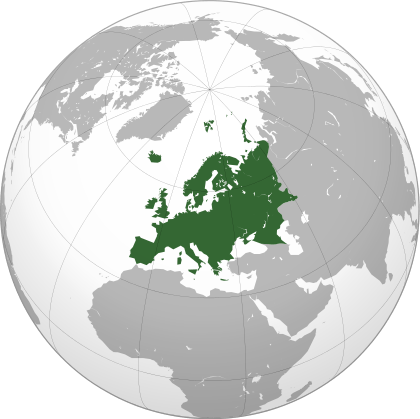Pannotia

Pannotia, first described by Ian W. D. Dalziel in 1997, is a hypothesized supercontinent that may have existed from the late Neoproterozoic Pan-African orogeny, about 600 million years ago, to the end of the Precambrian, about 541 million years ago. It is also known as the Vendian supercontinent. After that, it split into the islands of Laurentia, Siberia and Baltica, with the main landmass, Gondwana, south of it. [1]
Formation
About 750 million years ago (750 Ma), the previous supercontinent Rodinia rifted apart into three continents: Proto-Laurasia (which broke apart and eventually re-formed as Laurasia), the continental craton of Congo, and Proto-Gondwana (all of Gondwana except the Congo craton and Atlantica).
Proto-Laurasia rotated southward toward the South Pole. Proto-Gondwana rotated counterclockwise. The Congo craton came between Proto-Gondwana and Proto-Laurasia about 600 Ma. This formed Pannotia. With so much landmass around the poles, evidence suggests that there were more glaciers during this time than at any other time in geologic history.[2]
Geography and lifespan
Pannotia looked like a V that faced northeast. Inside the V was an ocean that opened up during the break-up of Rodinia, the Panthalassic Ocean, an ocean that became the early Pacific Ocean. There was a mid-ocean ridge in the middle of the Panthalassic Ocean. Outside of the V was a very large ancient ocean called the Panafrican Ocean that may have surrounded Pannotia, equivalent to the future Panthalassic Ocean.
Pannotia was short-lived. The collisions that formed Pannotia were glancing collisions, and the continents composing Pannotia already had active rifting. By about 540 Ma, or only about 60 million years after Pannotia formed, Pannotia disintegrated into four continents: Laurentia, Baltica, Siberia and Gondwana. Later, altered landmasses would recombine to form the most recent supercontinent, Pangaea.[3]
Another term for the supercontinent that is thought to have existed at the end of Neoproterozoic time is "Greater Gondwanaland", suggested by Stern in 1994. This term recognizes that the supercontinent of Gondwana, which formed at the end of the Neoproterozoic, was once part of the much larger end-Neoproterozoic supercontinent.
See also
References
- ↑ "Pannotia". Palaeos. Retrieved 2006-03-12.
- ↑ "Precambrian Paleobiology". Virtual Fossil Museum. Retrieved 2006-03-12.
- ↑ "Pannotia". UCMP Glossary. Retrieved 2006-03-12.
External links
- An image showing Pannotia according to Christopher Scotese. (it is referred to as the late Precambrian Supercontinent in the image).
- Torsvik, Trond Helge. "Palaeozoic Continent Margins: Late Cambrian (500 Ma)". Retrieved 18 June 2010.
- Stampfli, Gérard. "Prototethys (Ordovician): Early Ordovician (490 Ma) reconstruction". Retrieved 23 September 2010.
| |||||||||||||||||||||||||||||||||
.svg.png)
.svg.png)
.svg.png)
.svg.png)


.svg.png)
.svg.png)
.svg.png)
.svg.png)
.svg.png)